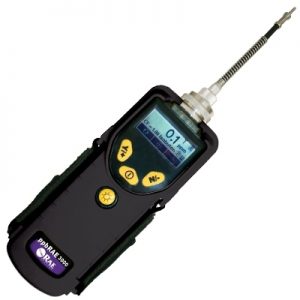Chemical Analysis - Non-Specific
What is it?
The principle on which these tools are based is the pyrolysis of the organic compounds that are present in the analyzed gas. This pyrolysis (which is conceptually similar to a combustion) is made possible by the presence of an energy source, which produces ions detectable by an electric sensor.

Photo Ionization Detector
What can it be used for?
One typical example is the case of refineries, where fugitive emissions from equipment and piping can be detected by means of the measurement of the total VOC concentration. Where a concentration of total VOC above a certain value (e.g. 10000 ppm) is measured, a leak is present. The same approach is used in landfills in order to identify the presence of leaks in the landfill cover, through which landfill is emitted into the atmosphere.
What can it NOT be used for?
This technique doesn’t give any information about the odour properties of the analysed gas.
